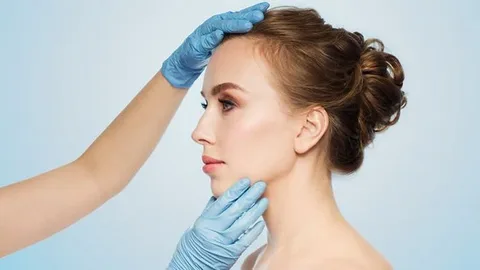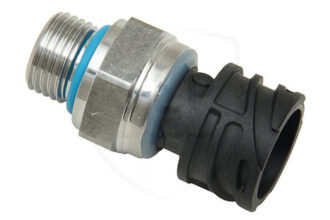Many people feel nervous or unsure about getting cosmetic surgery. Studies show that a clear plan and good support can help lead to better results and less stress. This blog will walk you through each step, from your first consultation to full recovery in Philadelphia.
Learn what to expect before, during, and after your procedure.
The Consultation Process
During the consultation, you will meet with your plastic surgeon. They will discuss your goals and concerns about surgery.
What to Expect During Your Consultation
Your consultation marks the beginning of your Philadelphia plastic surgery journey. It’s an opportunity to meet your plastic surgeon and discuss your goals.
- You will share your reasons for wanting surgery and what you hope to achieve.
- The surgeon will ask about your medical history to ensure you’re a good candidate for surgery.
- Expect a physical exam related to the procedure you’re considering, such as measuring areas for breast augmentation.
- Photos may be taken for your medical record and to plan the surgery.
- You’ll learn about the surgical options available that can meet your goals. This includes scarless options and minimally invasive techniques when applicable.
- Anesthesia types used during surgery will be explained. This helps prepare you for what to expect on the day of your operation.
- The surgeon will outline the recovery timeline, including when you can return to normal activities.
- Pain management after surgery is discussed, so you know how discomfort will be handled.
- You’ll receive information on preoperative planning and postoperative care. This ensures a smooth surgery and recovery process.
- The cost of the procedure and payment options are explained.
This visit is also a chance to assess if the surgeon’s approach aligns with your expectations.
Creating a Personalized Treatment Plan
After talking about what happens during your consultation, the next step is to plan your cosmetic surgery. Doctors in Philadelphia use exam results and patient goals to build a treatment plan.
Many plastic surgeons discuss different surgical procedures, like breast augmentation or body contouring. They listen to each patient’s concerns and talk through anesthesia options and pain management methods.
Surgeons also assess skin type, previous health issues, and recovery needs for each person. Some people may choose scarless options or minimally invasive techniques for a shorter healing time. Plans often include details about preoperative planning and postoperative care instructions. This approach helps maximize results while supporting comfort at every stage of recovery.
Choosing the Right Plastic Surgeon in Philadelphia
Choosing a good plastic surgeon is key. Look for someone with strong skills and a good reputation in Philadelphia.
Key Qualities to Look For
Choosing the right plastic surgeon in Philadelphia is vital for a successful cosmetic surgery experience. Here are the qualities you should look for:
- Board certification: Make sure the surgeon is certified by the American Board of Plastic Surgery. This shows they have passed tough exams and meet high standards.
- Experience in specific procedures: The surgeon should have plenty of experience with the procedure you want. Ask how many times they’ve done it.
- A good portfolio: Look at before and after photos of their past patients. This helps you see their skill level.
- Clear communication: Your surgeon should explain everything clearly and answer all your questions. You should feel comfortable talking to them.
- Positive reviews: Read reviews from former patients to learn about their experiences. Happy patients usually mean a trustworthy surgeon.
- Hospital privileges: If your surgeon can work in accredited hospitals, it means they meet strict standards for patient care.
- Personalized care: They should offer a treatment plan that fits your needs, not a one-size-fits-all approach.
- Emergency preparedness: Find out how they handle complications or emergencies during surgery.
- Professionalism of staff: The staff should be helpful and professional because they will be part of your care too.
- Follow-up care offered: Good surgeons provide follow-up appointments to check on your recovery and results.
Reviews and Testimonials
Seeing reviews and testimonials can help you choose the right plastic surgeon. Many past patients share their experiences online. Their stories can give you a clear picture of what to expect.
Look for feedback about specific procedures like breast augmentation or body contouring. Good reviews often highlight patient care and satisfaction with surgical outcomes. You may find comments on pain management or recovery timelines as well. The staff was friendly, and my results were beyond what I expected.
Common Plastic Surgery Procedures
Many people choose face, breast, and body surgeries to improve their appearance. These procedures can enhance features or reshape parts of the body for a more balanced look.
Face Procedures
Plastic surgery offers various facial procedures to enhance appearance. These treatments target specific areas for natural-looking results.
- Facelifts help tighten the skin on the face and neck. They reduce wrinkles and sagging.
- Rhinoplasty reshapes the nose for better facial balance. It can improve breathing too.
- Eyelid surgery, or blepharoplasty, removes excess skin from the eyelids. This makes eyes look more youthful.
- Brow lifts raise drooping eyebrows. They create a smoother forehead and reduce frown lines.
- Chin augmentation improves the chin’s shape and size. Many choose implants or fillers for this.
- Lip enhancement adds volume to thin lips. This can be done with fillers or implants.
- Facial fillers restore lost volume in cheeks and under eyes. They provide a plumper and fresher look.
- Botox relaxes muscles to smooth fine lines and wrinkles. It is commonly used on the forehead and around the eyes.
Each procedure has unique benefits that cater to individual needs. Consulting with a skilled plastic surgeon helps find the best options for you.
Breast Procedures
Breast procedures are popular choices for many patients. They can enhance appearance and boost confidence.
- Breast augmentation: This procedure adds volume to the breasts using implants. Patients choose from silicone or saline options based on their preferences.
- Breast lift: A breast lift raises and firms sagging breasts. It removes excess skin and tightens tissue, giving a youthful shape.
- Breast reduction: This surgery decreases breast size for comfort and aesthetics. It helps relieve physical pain caused by large breasts.
- Fat transfer breast augmentation: This method uses fat from other body areas to increase breast size. It creates a natural look without implants.
- Minimally invasive techniques: Some procedures use small incisions for less scarring. These techniques speed up recovery while still achieving desired results.
- Anesthesia options: Surgeons offer various anesthesia methods based on the procedure type and patient comfort level. Options include local anesthesia or general anesthesia.
- Pain management strategies: Managing discomfort is crucial after any breast procedure. Surgeons provide guidelines for effective pain relief during recovery periods.
- Preoperative planning: Before surgery, patients meet with surgeons to discuss goals and expectations thoroughly. Individualized plans help align personal desires with realistic outcomes.
- Postoperative care guidelines: Following surgery, patients receive specific care instructions to ensure proper healing. Adhering to these guidelines leads to better surgical outcomes.
- Recovery timeline: Healing time varies depending on the procedure performed and individual health factors, but most return to daily activities within weeks.
The next section covers body contouring options that can complement breast procedures beautifully.
Body Contouring
Body contouring reshapes areas of the body. Many seek this procedure to enhance their appearance.
- Liposuction removes fat from specific areas. This helps create a more sculpted look. It works well for hips, thighs, and the abdomen.
- Tummy tuck tightens loose skin on the stomach. This procedure is great for those who have lost weight or had children. It gives a flatter and firmer abdomen.
- Arm lift reduces excess skin on the arms. This helps improve the arm’s shape and firmness. Patients feel more confident in sleeveless clothing.
- Thigh lift eliminates sagging skin on the thighs. It can make legs appear slimmer and more toned after weight loss.
- Brazilian butt lift enhances the shape and size of the buttocks. It uses fat from other body areas to create a fuller look. Many enjoy this as a natural alternative to implants.
- CoolSculpting is a non-surgical option that freezes fat cells. As these cells die, your body naturally eliminates them over time. This method offers less downtime compared to traditional surgery.
Body contouring can elevate confidence and self-image through cosmetic surgery options customized to individual needs.
The Recovery Journey
Recovery starts right after surgery. You will need to follow care guidelines for the best results.
Post-Operative Care Guidelines
Post-operative care is vital for a smooth recovery. Following the right steps can help you heal well and achieve your desired results.
- Keep surgical areas clean and dry. Clean the area gently with soap and water as directed by your doctor.
- Take prescribed medications on time. Pain management is key after surgery, so stick to your schedule.
- Avoid strenuous activities for the first few weeks. Jobs that require heavy lifting or intense movement can hinder healing.
- Attend follow-up appointments with your surgeon. These visits ensure that your healing process is on track and problems can be addressed early.
- Stay hydrated and eat nutritious foods. Proper nutrition boosts healing and helps maintain energy levels during recovery.
- Use cold packs on swollen areas if advised by your surgeon. This can reduce swelling and discomfort.
- Follow any specific guidelines regarding physical activity, including when it’s safe to resume exercise.
- Watch for signs of infection, such as increased redness or drainage from the incision site.
- Avoid smoking; it can slow down the healing process significantly.
- Ask questions if uncertain about anything in your post-operative care plan; clear communication is crucial.
Doing these things will enhance your experience after surgery and lead to optimal outcomes in cosmetic surgery procedures like breast augmentation or body contouring in Philadelphia.
Timeline for Healing and Results
Healing takes time after plastic surgery. Results will appear gradually as your body recovers.
- The first week focuses on rest and healing. You will have some swelling and bruising at this stage.
- After one to two weeks, most swelling decreases significantly. Many patients feel comfortable returning to light activities during this time.
- By three weeks, you should see better results. Some people may still notice minor swelling.
- At six weeks, many return to normal activities, including exercise. Full healing will still be ongoing.
- Three months post-surgery usually shows much of the final results. This is a good time for a follow-up with your plastic surgeon.
- Full recovery can take six months or longer for some procedures. Patience is key as your body continues to heal.
Follow all postoperative care guidelines for the best results from your cosmetic surgery experience in Philadelphia.
Conclusion
The Philadelphia plastic surgery experience is about more than just procedures. It starts with your consultation and ends with recovery. Each step is important for a smooth journey. A good surgeon guides you through every phase. Trust the process, and enjoy your transformation.

















